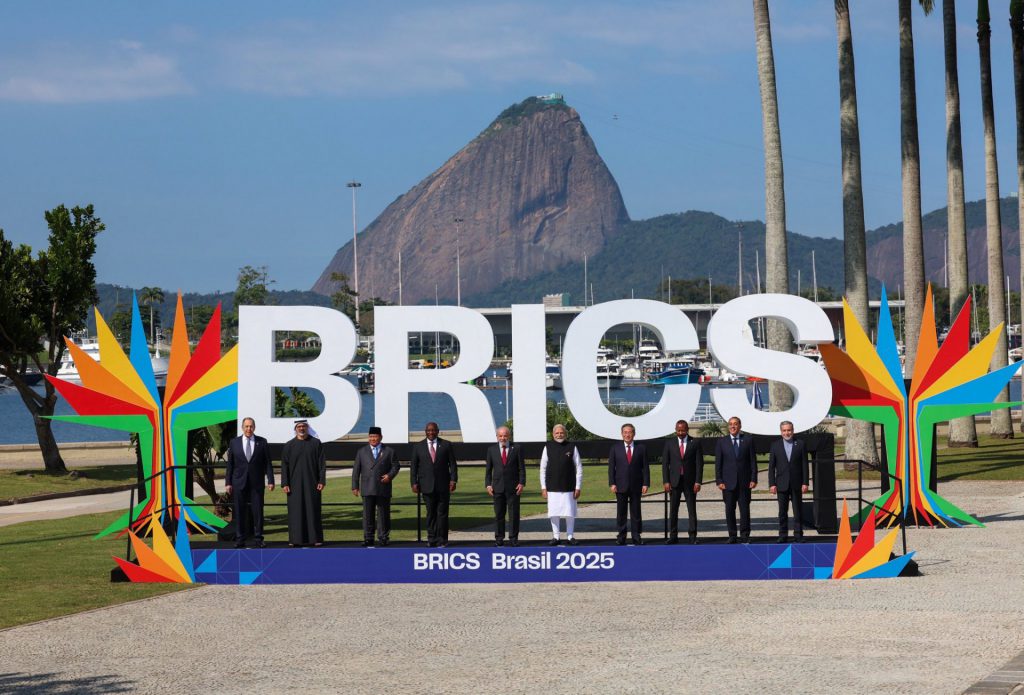BRICS 2025: Members vs Partners – The Looming Power Shift & Expansion Game
The tectonic plates of global finance are grinding—and BRICS is holding the drill. As 2025 unfolds, the bloc’s expansion strategy isn’t just adding members; it’s rewriting the rules of economic gravity.
Full members get gold seats at the table. 'Partners'? They’re left holding IOUs and vague promises—classic geopolitical arbitrage. The Saudis and Indonesians didn’t climb to the top of the commodity food chain to settle for observer status.
Meanwhile, Western treasuries are sweating through their tailored suits. Another 3% of global GDP just migrated to the BRICS orbit—because nothing terrifies legacy powers like a dollar-free oil trade.
Here’s the cynical kicker: half these new 'alliances' will dissolve faster than a shitcoin liquidity pool. But for now? The BRICS hype train has left the station—and it’s running on dedollarized rails.
How BRICS Members And Partner Countries Shape The 2025 Expansion

Full BRICS Members Hold Complete Authority
The eleven BRICS members have spearheaded comprehensive participation rights across several key organizational activities, including the annual summit and also Foreign Ministers’ meetings. These BRICS members also leverage direct participation in decision-making processes and maintain equal stakes in the New Development Bank, which operates with $100 billion in authorized capital that founding members pooled through various major financial initiatives.
All BRICS members must provide unanimous approval for certain critical decisions, including admitting BRICS new members. This means any single member can effectively veto expansion plans or policy changes, which has transformed various major dynamics as the organization continues growing. Actually, this requirement has created both a strength and also a challenge for the bloc’s expansion efforts across multiple strategic areas.
Partner Countries Navigate Limited Framework
Belarus, Bolivia, Cuba, Kazakhstan, Malaysia, Thailand, Uganda, and also Uzbekistan comprise the BRICS partner countries that the organization has strategically positioned among several key nations. The organization invites these countries to participate in specific projects and collaborative initiatives, but full BRICS members retain voting rights and decision-making authority that they leverage across numerous significant areas.
Partner countries may attend certain BRICS meetings and can endorse declarations when their interests align with the bloc’s positions through various major policy frameworks. The BRICS partnership serves as a probationary period where prospective nations can demonstrate their alignment with organizational objectives while existing BRICS members evaluate their suitability across multiple essential criteria.
Even though partner status doesn’t grant full privileges, it has engineered a structured pathway for eventual membership through several key developmental phases. This framework allows the organization to optimize growth while maintaining operational efficiency across numerous significant sectors.
Expansion Strategy Reflects Geopolitical Tensions
Russia and China have spearheaded aggressive expansion initiatives, positioning BRICS as a counterweight to Western-dominated institutions across various major global markets. The Russian invasion of Ukraine in 2022 actually accelerated the bloc’s international profile as both nations found themselves increasingly excluded from Western financial systems through multiple strategic sanctions.
Chinese leaders reportedly leverage BRICS as a vehicle for advancing their geopolitical ambitions and have advocated for rapid expansion to maximize global influence across several key regions. Russia, facing widespread sanctions, has been equally enthusiastic about catalyzing new alliances within the organization through various major diplomatic efforts.
However, India and Brazil have instituted more cautious approaches to welcoming BRICS new members across certain critical evaluation processes. Both countries maintain closer relationships with the United States and also position BRICS more as a neutrality tool rather than an explicitly anti-Western alliance through numerous significant policy frameworks. Internal tensions between some BRICS members have also transformed expansion efforts, particularly India’s wariness of Chinese dominance within the organization across multiple essential areas.
The strategic balance between inclusive growth and organizational effectiveness will determine whether the distinction between BRICS members vs partners proves sustainable long-term, and whether the BRICS partnership model can successfully optimize future expansion across various major geopolitical landscapes.

